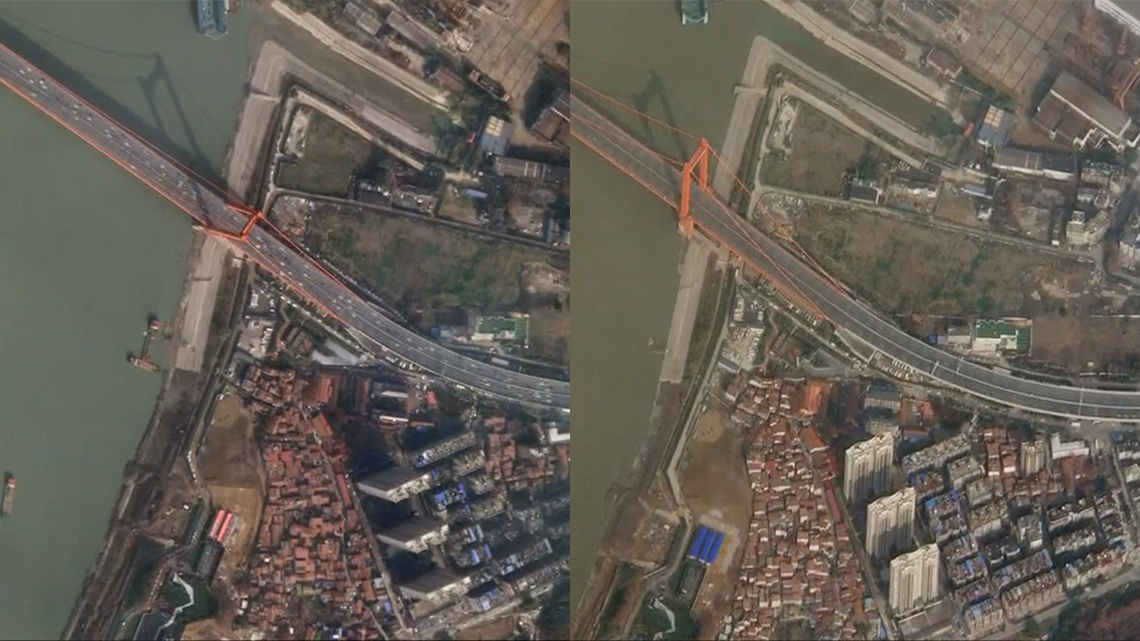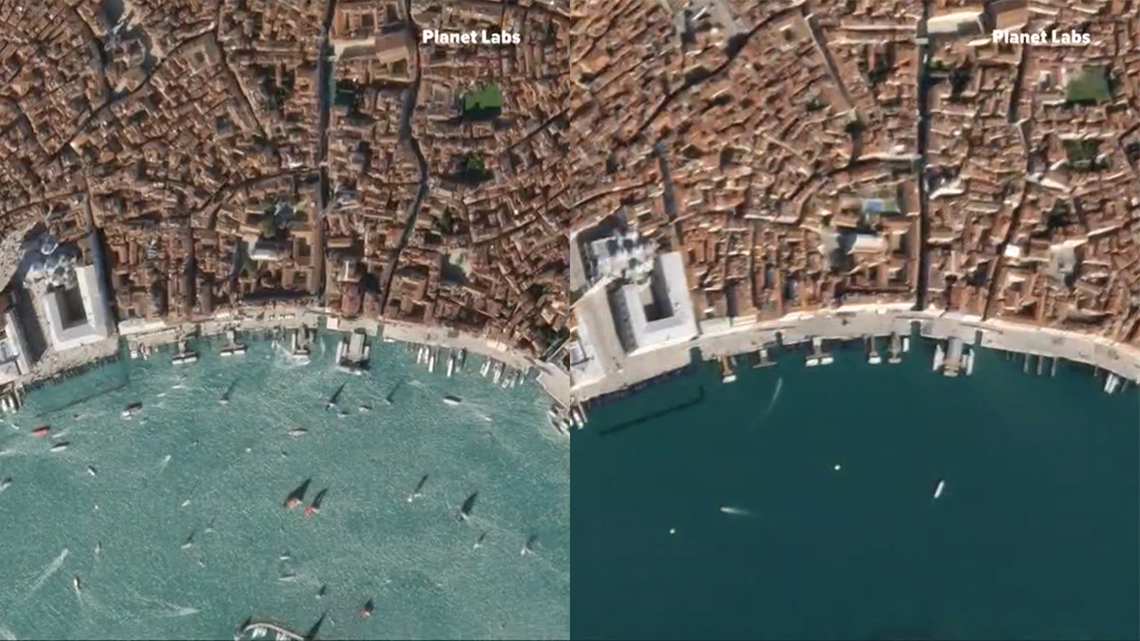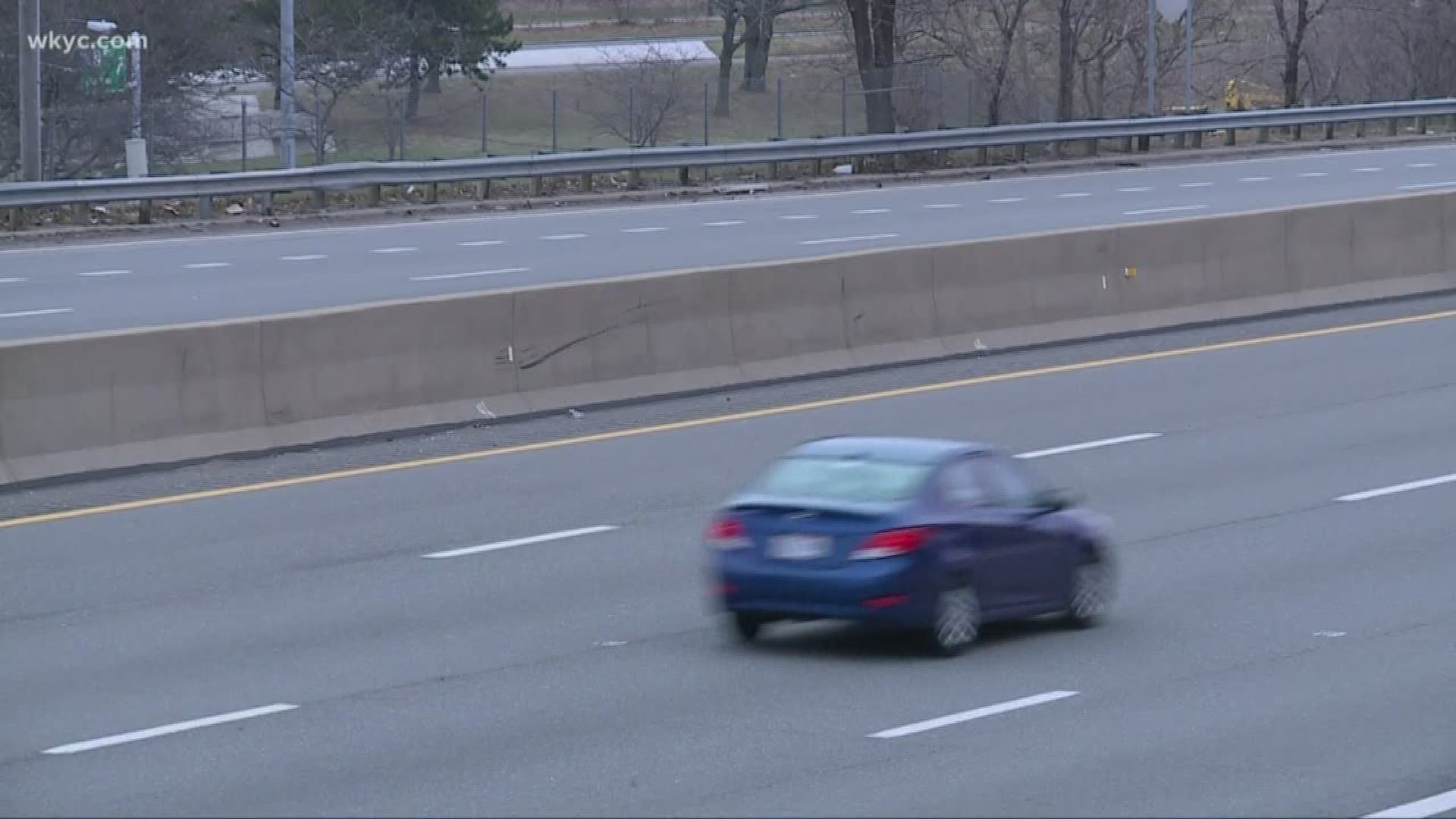CLEVELAND — In Wuhan, China, the center of where officials believe the coronavirus outbreak began, satellite images from Planet Labs show how a popular bridge on Jan. 12 was filled with cars. Two weeks later, it was nearly deserted.
"Scientifically speaking, it’s kind of cool," Cleveland State University Professor Thijs Heus said.


China isn't alone: In Miami beach, more Planet Labs images show a crowded beach before the outbreak hit the United States. After, the beach is desolate.


In Venice, Italy, a once-bustling part of the world that saw its waters filled with gondolas now sits nearly empty. The water is so still you can see the bottom of the city's canal.


Back in the U.S., the parking lot of Chicago's Shedd Aquarium and the adjacent harbor were filled with cars and boats; now, they're mostly gone.


As jarring as this is, all of this lack of activity does have a silver lining.
"You’re seeing a lot less pollution and a lot less smog in the air," Heus explained. "You’re also seeing a similar situation on the big shipping routes."
Even here in Ohio, roads that were once packed with cars now sit nearly bare after Gov. Mike DeWine's stay-at-home order.
While coronavirus has forced many of us to stay inside, our response to the virus is having an impact on our weather: Skies overall are cleaner, which can lead to greater changes in temperature. But will this last forever?
"My guess is that it’s all going to go back to normal unless there’s actually change in public policies and people are going to work more from home," Heus told us. "The net effect may be more pollution."
Only time will tell.

